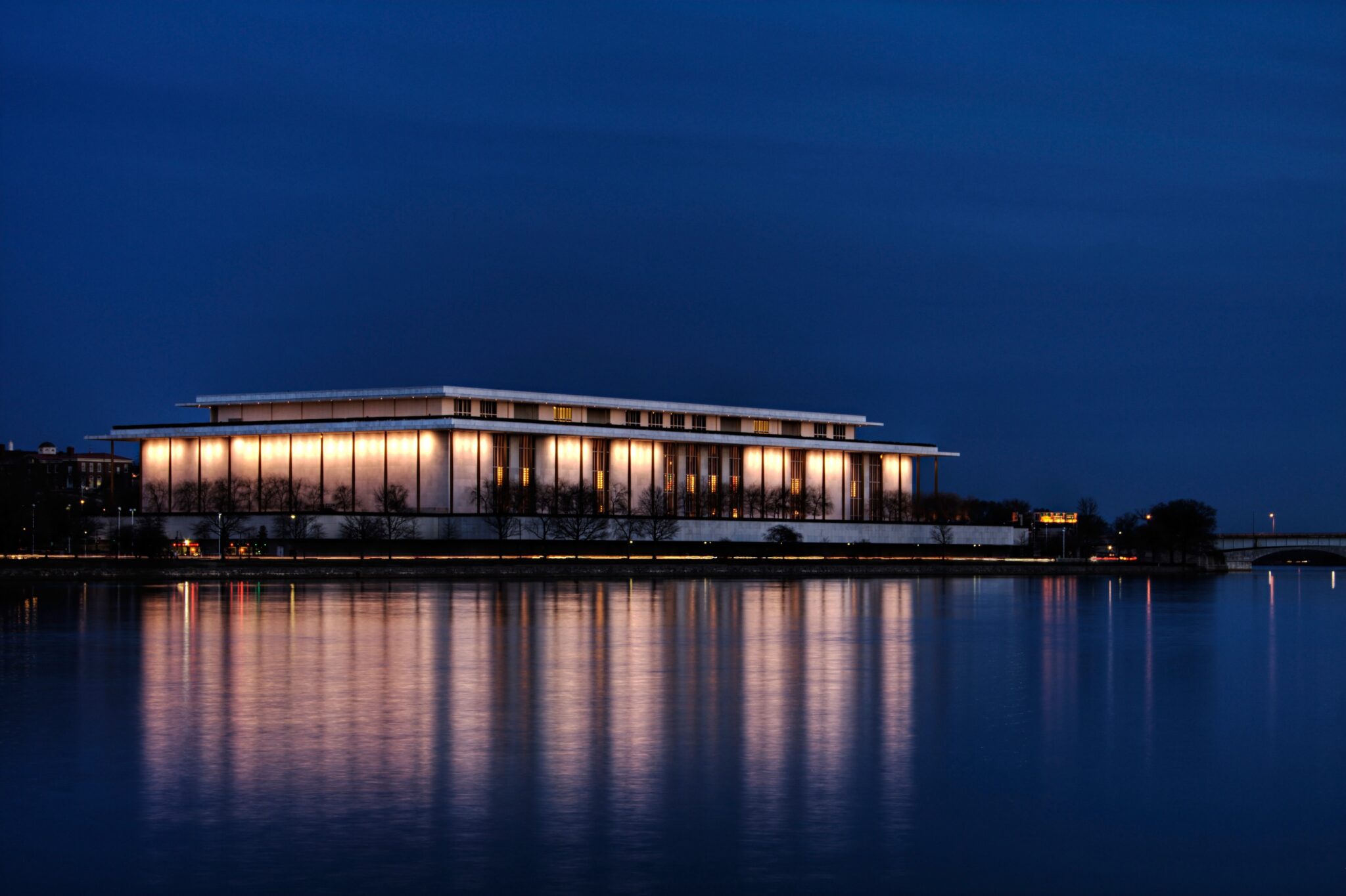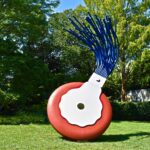In 1958, President Dwight D. Eisenhower signed bipartisan legislation creating a National Cultural Center in the nation’s capital. In November of 1962, President and Mrs. Kennedy launched a $30 million fundraising campaign for the Center’s construction. Former President Eisenhower and his wife Mamie participated in the event which demonstrated the bipartisan support for a world-class center for the performing arts in Washington, DC. In 1963, President Kennedy signed legislation to extend the fundraising deadline for the Center.
Two months after President Kennedy’s assassination, by an Act of Congress signed into law by President Lyndon B. Johnson on January 23, 1964, the nation’s National Cultural Center was designated as a living memorial to President John F. Kennedy. By this Act, President Kennedy’s devotion to the advancement of the performing arts in the United States was recognized.

Architect Edward Durell Stone designed the Kennedy Center. It’s massive at 100 feet high, 630 feet long, and 300 feet wide. It features a grand foyer, with 16 hand-blown Orrefors crystal chandeliers (a gift from Sweden) and red carpeting. The Hall of States and the Hall of Nations are both 250 feet long.
Cyril M. Harris designed the Kennedy Center’s auditoriums and their acoustics. One of the key considerations that needed to be addressed was the many aircraft flying along the Potomac River and over the Kennedy Center en route to and from nearby Washington National Airport. To keep out this noise, the Kennedy Center was designed as a box within a box, giving each auditorium an extra outer shell.
The Center houses seven theaters, including the Concert Hall, known for its impressive acoustics and symphonic performances. Artwork given by many countries can be found both in and outside the center, including a statue of Don Quixote (a gift from Spain) and Henri Matisse tapestries in the Opera House lobby (a gift from France).
Of course, the best way to experience the Kennedy Center is to see a show. The Center is the busiest of all U.S. performing arts centers, hosting more than 2,000 performances a year. Over two million people annually watch performances, from orchestra seats at sold-out shows to the free concert series at the Millenium Stage.
The National Symphony Orchestra, the Washington National Opera, and The Washington Ballet
Throughout its history, the National Symphony Orchestra has served the nation through annual state residencies, national television broadcasts, radio broadcasts, and touring. The NSO is also a cultural ambassador for the United States and represents the nation on tours to Europe, Asia, South America, and the Middle East.
The 2023–2024 season marks the National Symphony Orchestra’s 93rd and Gianandrea Noseda’s seventh as its music director. The Italian conductor serves as the Orchestra’s seventh music director, joining the NSO’s legacy of such distinguished leaders as Christoph Eschenbach, Leonard Slatkin, Mstislav Rostropovich, Antal Dorati, Howard Mitchell, and Hans Kindler. The Orchestra’s artistic leadership also includes Principal Pops Conductor Steven Reineke and Artistic Advisor Ben Folds.
Founded in 1956 as the Opera Society of Washington, the Washington National Opera continues to offer performances by the greatest talents the opera world has to offer, in works beloved and unfamiliar.
The Opera Society’s inaugural production on January 31, 1957, was not with a tried-and-true staple, but with Mozart’s The Abduction from the Seraglio. Performances were held in George Washington University’s Lisner Auditorium. Conductor Callaway held rehearsals in New York, as that is where the singers were, and props had to be assembled from various sources including the Turkish Embassy. Nevertheless, the production was a huge success.
Almost seventy years later, and countless artistic leaps, the Washington National Opera continues to move boldly forward on the great adventure that began years ago in a university auditorium. Washington National Opera is now one of the nation’s leading opera companies playing to standing-room audiences at the Kennedy Center.
The Washington Ballet’s professional company consists of world-class dancers forming an ensemble core with apprentices. Together they perform a wide variety of works from the classical choreography of Marius Petipa and George Balanchine to contemporary pieces by Christopher Wheeldon, Jiří Kylián, Hans van Manen, Twyla Tharp, and Mark Morris to new creations by Alexei Ratmansky and Justin Peck.
Every year the professional and studio companies bring productions of the highest caliber to stages throughout the national capital area including the Harman Center for the Arts at the Sidney Harman Hall, the John F. Kennedy Center for the Performing Arts, the Warner Theatre, and Town Hall Education Arts Recreation Campus (THEARC).
The Kennedy Center houses and represents the best of American performative arts – theater, symphony, opera, and ballet – there is always an amazing performance to entertain.



